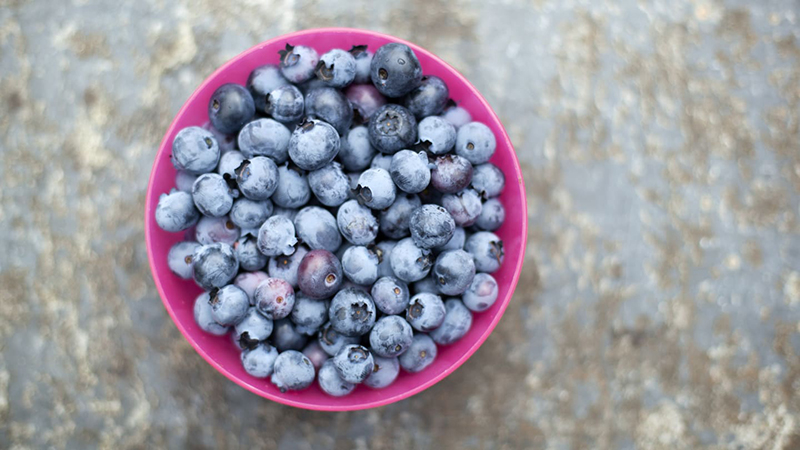The nutritional advice to “eat the rainbow” gets hard to follow once you reach the bottom half of the light spectrum. While red, yellow, and green foods are abundant in nature, blue ingredients are much harder to come by. Even the most famously “blue” fruit in the produce aisle has a misleading name. As new research shared in the journal Science Advances explains, blueberries contain no blue pigments, which means they’re not blue in the true sense of the word.
For their study, which was published on February 7, 2024, a team of scientists from Germany and the UK investigated the adaptations blueberries use to achieve their colorful appearance without pigmentation. The pigments of most fruits come through in their juices (anyone who has ever stained their cutting board slicing cherries for a pie knows this). That isn’t the case with blueberries, which suggested to the researchers that there was a rarer mechanism at play.
They searched for the answer in the berry’s waxy coating. In addition to keeping it clean and protected, this outer layer is responsible for the fruit’s unique coloring. After studying the wax through an electron microscope, the scientists discovered nanostructures that scatter blue and ultraviolet light while absorbing all other wavelengths on the light spectrum. This produces something called “structural color,” and it’s also behind the blue and indigo hues you see in plums and juniper berries. The iridescent greenish-blue in peacock feathers is another example of a color in nature that comes from physical structures rather than pigmentation.
The team was also able to recreate the structures in a lab. After sampling the wax from the outside of the blueberry, they successfully recrystalized it and isolated the blue-scattering colorant, which is only two microns wide. The findings suggest that the colorant could be used to make new types of blue paints and dyes in the future.
“It was really interesting to find that there was an unknown coloration mechanism right under our noses, on popular fruits that we grow and eat all the time,” study co-author Rox Middleton, research fellow at the University of Bristol’s School of Biological Sciences, said in a press release.
The color blue is scarce in the plant kingdom. It sits at the high-energy end of the light spectrum, so plants that rely on sunlight for nourishment can’t afford to reflect it away from them. They absorb the blue light instead while reflecting lower-energy wavelengths like reds and greens. This explains why there’s no true blue pigment in nature. Fruits and flowers that appear blue use various tricks, like mixing non-blue pigments, or in the blueberry’s case, relying on a special colorant in their coating.
And if you’ve ever wondered why you’ve never seen a blue raspberry in nature, it’s because they don’t exist. Red is so abundant in fruit that ice pop manufacturers needed a way to distinguish the different flavors. Their solution was to rebrand the raspberry as being blue, as they had a ton of artificial blue dye on hand and no fruit flavors to pair it with.

